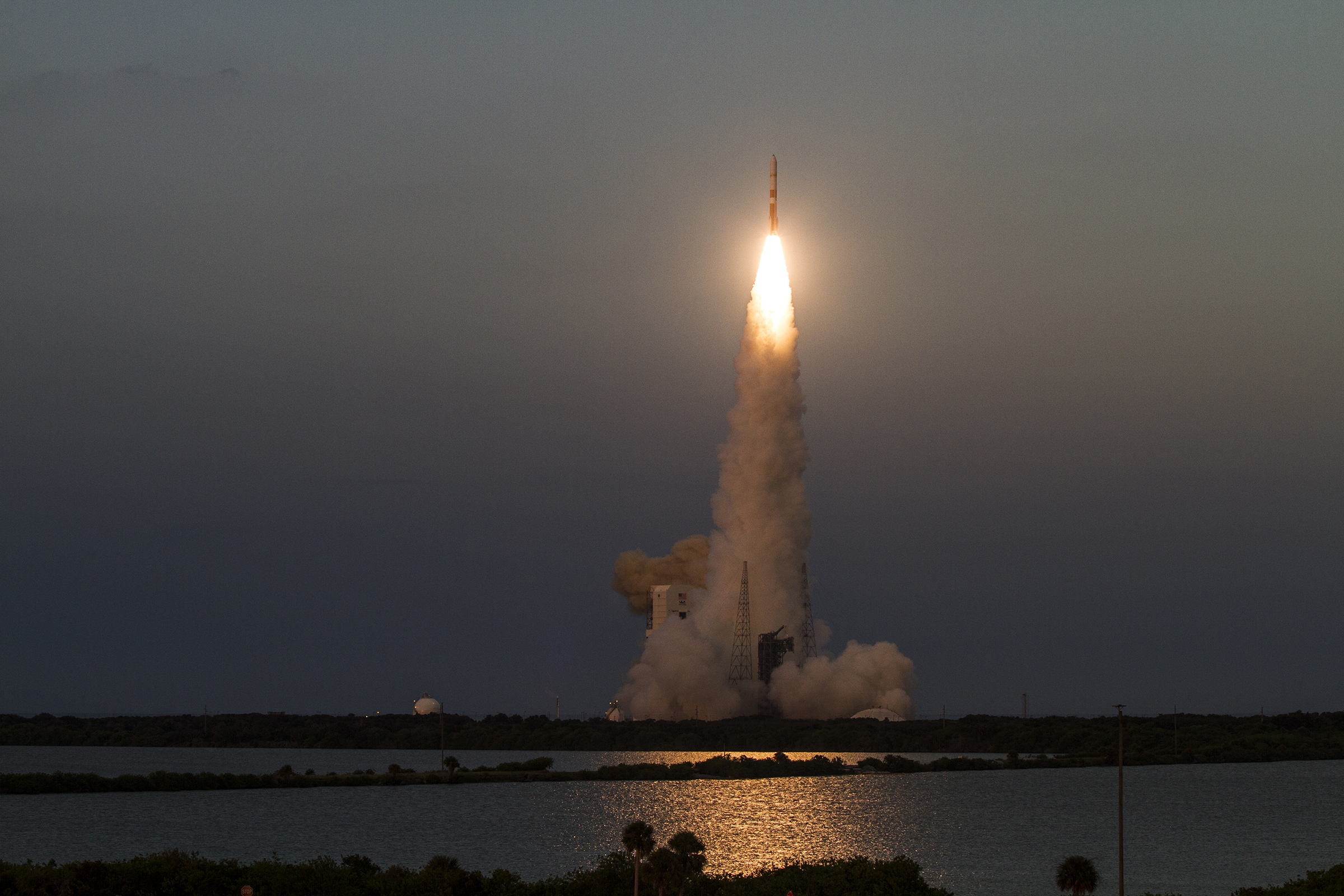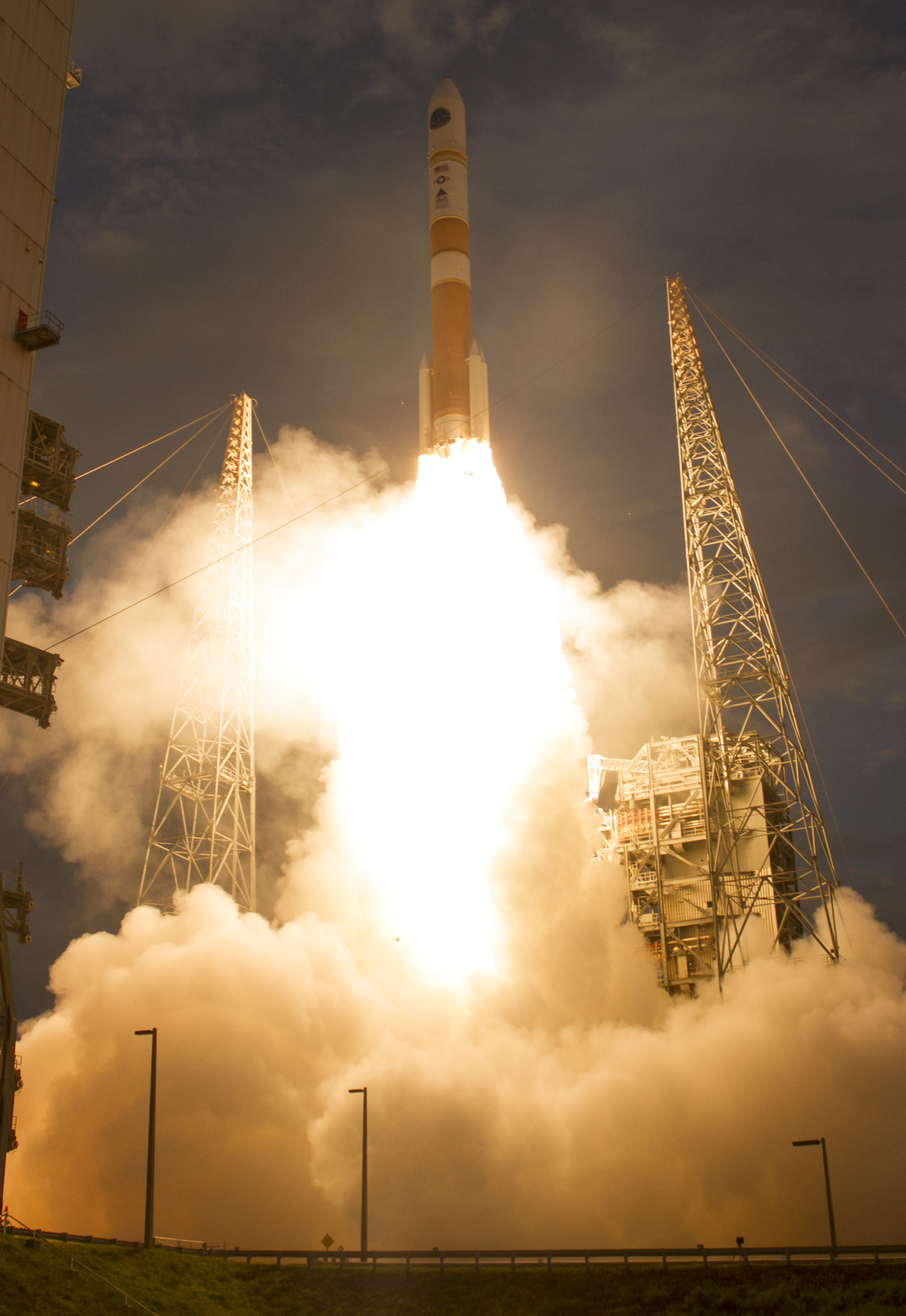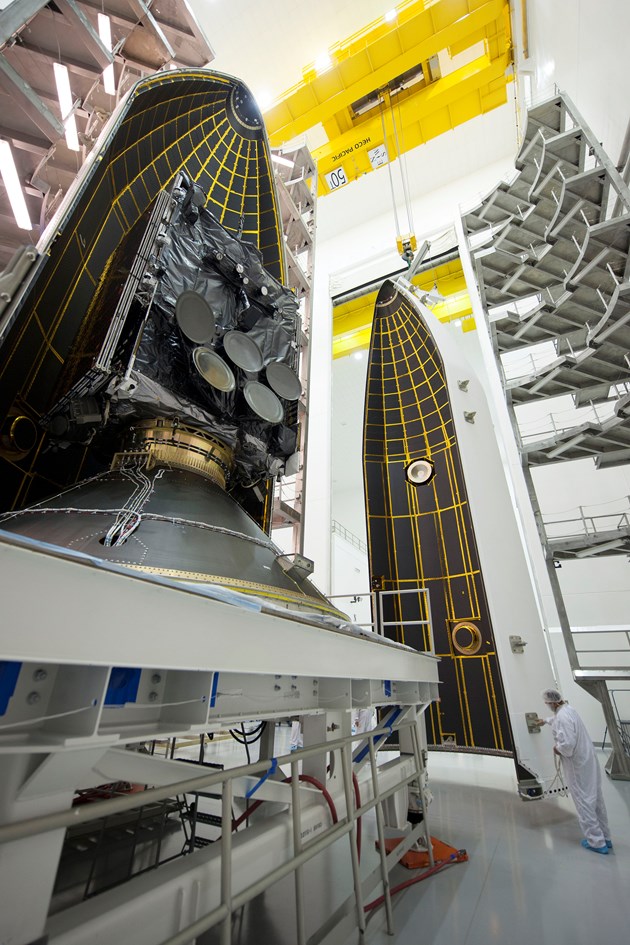US Air Force Launches Advanced Military Communications Satellite

The U.S. Air Force launched an advanced military communications satellite late Thursday (July 24), lighting up the evening sky as it became the latest addition to a growing milsat constellation supporting American military forces from orbit.
The $445 million Wideband Global SATCOM 7 (WGS-7) satellite blasted off from Cape Canaveral Air Force Station in Florida at 8:07 p.m. EDT (0007 July 25 GMT), riding a Delta IV rocket provided by the launch provider United Launch Alliance. This is the seventh WGS satellite launched by the U.S. Air Force since 2007. The constellation of spacecraft provides communications capabilities to U.S. military forces.
Today's launch marked the first use of the new RS-68A main engine in the Delta IV launch vehicle, according to Spaceflight Now. The engine upgrade is a step toward standardizing the engines for all Delta IV vehicle configurations, Spaceflight Now reported.
The launch from Space Launch Complex-37 was originally scheduled for Wednesday (July 22) but was canceled due to the weather. The launch vehicle was a Delta IV Medium-Plus rocket in a 5-4 configuration, which means the main rocket body as a five-meter (16.4 feet) payload fairing and four strap-on rocket motors.
Built by Boeing, the WGS satellites are "the Department of Defense's highest-capacity communication satellites," according to a fact sheet published by the Los Angeles Air Force Base. Three more WGS satellites are scheduled to launch by 2018, completing a 10-satellite constellation, Robert Tarleton, military satellite communication director at the Space and Missions System Center (SMC), said in a teleconference July 17.
The WGS constellation "provides wideband communications to our soldiers, sailors, airmen, marines and, of course, several international partners through broadcast, multicast and point-to-point connections anytime, anywhere around the world," Tarleton said.
"One of the unique features of WGS is that it can simultaneously support X and Ka-band communications and seamlessly connect across those bands," Tarleton noted (X and Ka-bands are communications frequencies). The communication system is also used "for tactical communications and performing numerous military operations, including humanitarian and aid missions when necessary," he added.
Breaking space news, the latest updates on rocket launches, skywatching events and more!
Follow Calla Cofield @callacofield.Follow us @Spacedotcom, Facebook and Google+. Original article on Space.com.

Calla Cofield joined Space.com's crew in October 2014. She enjoys writing about black holes, exploding stars, ripples in space-time, science in comic books, and all the mysteries of the cosmos. Prior to joining Space.com Calla worked as a freelance writer, with her work appearing in APS News, Symmetry magazine, Scientific American, Nature News, Physics World, and others. From 2010 to 2014 she was a producer for The Physics Central Podcast. Previously, Calla worked at the American Museum of Natural History in New York City (hands down the best office building ever) and SLAC National Accelerator Laboratory in California. Calla studied physics at the University of Massachusetts, Amherst and is originally from Sandy, Utah. In 2018, Calla left Space.com to join NASA's Jet Propulsion Laboratory media team where she oversees astronomy, physics, exoplanets and the Cold Atom Lab mission. She has been underground at three of the largest particle accelerators in the world and would really like to know what the heck dark matter is. Contact Calla via: E-Mail – Twitter


